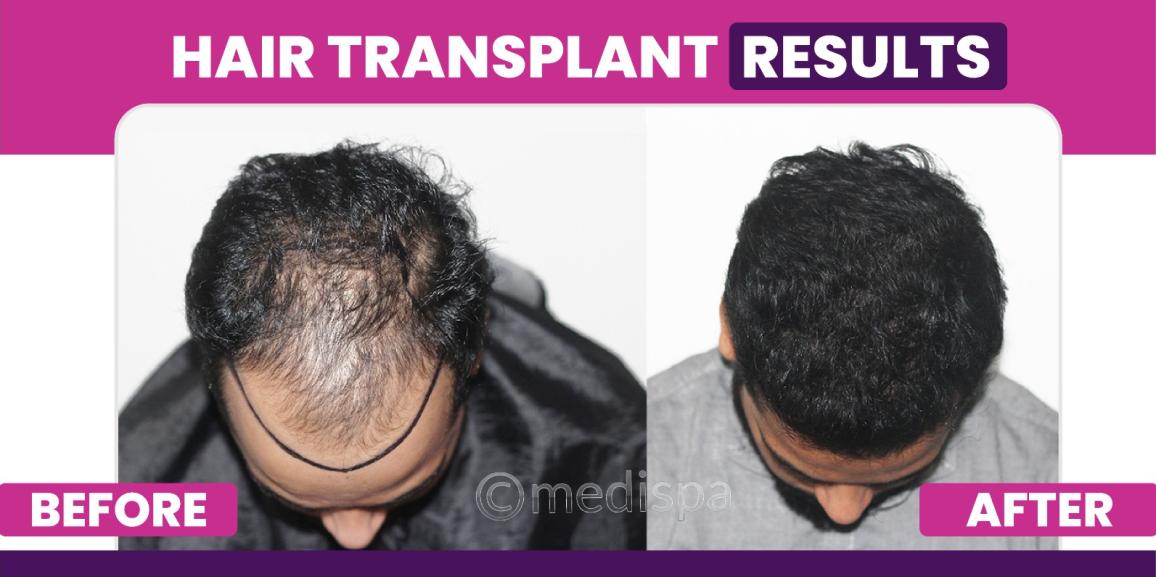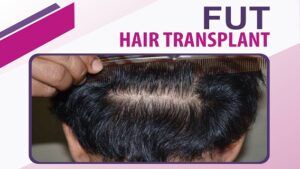
The majority of individuals experiencing hair loss are interested in undergoing a hair transplant procedure as it offers a long-term solution to their problem. Although a hair transplant can be chosen at any stage of hair loss, its feasibility may vary for different individuals. It is important to note that the decision to undergo the surgery cannot be made hastily, as it requires consultation with a qualified surgeon to determine if you are a suitable candidate. Therefore, when considering a hair transplant, it is crucial to actively search for a reputable hair transplant surgeon who can provide honest advice based on your specific hair loss situation and other relevant factors. The next step involves scheduling a consultation to discuss the available treatment options for your hair loss.
The field of hair transplant in Jaipur has advanced significantly compared to other cities, offering cutting-edge and top-notch solutions. The city has gained global recognition for its exceptional hair restoration services, thanks to a select group of highly acclaimed hair transplant specialists. The competitive environment among clinics has also led to a noticeable reduction in the hair transplant cost in Jaipur.
Medispa hair transplant clinics in New Delhi and Jaipur are esteemed establishments known for their superior hair transplant procedures. Numerous patients have placed their trust in these clinics, and the effectiveness of the treatment can be easily verified through online reviews, patient testimonials, and before-and-after photo galleries. Dr. Suneet Soni, the owner of Medispa and an expert surgeon, is celebrated for his meticulous treatment planning and the natural-looking results achieved, including perfectly crafted hairlines.
Hair transplant procedure
The surgical process consists of two primary stages: the removal of hair grafts and the transplantation of harvested hair follicles. This minimally invasive method necessitates the precise extraction of hair grafts from specific regions of the body that possess hair roots resistant to DHT or permanent hair. By transplanting these DHT-resistant hair roots to the targeted bald area, long-lasting outcomes are achieved. This is due to the fact that the transplanted hair roots maintain their genetic composition, resulting in donor dominance.
Hair transplant methods
There are two techniques available for hair transplantation:
- The FUT method, also referred to as the strip method, entails removing a strip of hair from the donor area. Subsequently, each hair follicle is meticulously extracted from the strip using microscopes and transplanted into the balding area. The donor area is then closed with stitches. This method can result in the transplantation of 3000 – 3500 hair follicles in a single session.
- The FUE method involves individually extracting each hair follicle from the donor area using a punch device. These extracted hair follicles are then implanted into the balding area. This technique can extract 2000 – 2500 hair follicles in one session.
What are the situations where feasibility is skeptical?
In certain scenarios of hair loss, the appropriateness of considering hair transplant as a treatment option may be uncertain. For example:
- Ongoing progression of hair loss: In situations where hair loss is progressively worsening, it is important to exercise caution. Patients must be fully educated about the potential risks prior to making a decision regarding a hair transplant procedure. Ideally, hair transplants should be considered for cases that have maintained stability over a considerable duration.
- Alopecia areata: It is an autoimmune condition that leads to patchy hair loss on different parts of the body, including the scalp, face, and body. Although it commonly impacts the scalp, eyebrows, beard, and mustache, hair loss usually begins with small patches that can eventually merge to create larger areas. Hair transplants are not advisable for unstable cases of alopecia areata due to the risk of losing the newly transplanted hair. However, in instances where the hair loss has remained stable for more than 3 years and no underlying inflammation is detected through a scalp biopsy, a hair transplant may be considered as a viable option. Patients should be informed in advance about the possibility of treatment failure in such scenarios.
- Young patients: Hair loss in young patients raises concerns about the prognosis, as it is more likely to progress. Therefore, it is important to carefully evaluate the possibility of hair transplant once the hair loss stabilizes. Young patients must be well-informed about the progression of hair loss, the requirement for future sessions, and the success rate of hair transplant. If hair transplant is selected as an option, it is recommended to utilize a combination technique. This technique provides the benefit of extracting a significant number of grafts while preserving the donor site for future sessions.
- High grade baldness: In cases of Norwood grade VII where there is a lack of appropriate donor density, it is crucial to consider the suitable hair transplant technique. Neither the FUT nor FUE method alone can extract an adequate number of grafts for extensive cases. Patients should be clearly informed about the necessity of future sessions if the desired level of hair restoration cannot be achieved in a single session. In such instances, it is advisable to opt for the combination technique of FUT+FUE, as it enables the extraction of more than 4000 grafts and preserves donor hair for future sessions.
- The patient’s expectations: It may sometimes be unrealistic when it comes to a hair transplant procedure. This procedure can only restore and cover the bald areas of the head by relocating hair follicles from areas with permanent hair roots that are not affected by DHT hormones. However, it is important to understand that this procedure does not prevent future hair loss from other areas of the scalp, nor does it generate new follicles to replace the lost ones. Once hair is lost, it cannot be restored through any means, including hair transplant. It is also crucial to manage expectations as hair transplant procedures can only provide limited coverage, typically around 30% of the original hair, due to the restricted blood supply required for the nourishment of the transplanted follicles.
- Systemic illness: Patients with systemic illnesses may experience hair loss as a symptom. During the initial consultation, the surgeon will carefully evaluate and rule out any underlying systemic diseases that may be causing the hair loss. If the hair loss is indeed associated with a systemic illness, it is crucial to prioritize treating the underlying cause rather than immediately opting for a hair transplant. Neglecting to address the underlying cause can lead to the loss of newly transplanted hair follicles and ultimately result in the failure of the hair transplant procedure.
Medispa hair transplant clinic is globally renowned for its exceptional hair transplant procedures, which are backed by a 100% guarantee of successful results. Dr. Suneet Soni, a highly respected figure in the field of hair transplant, has built a strong reputation by consistently providing genuine advice to patients that always prioritizes their best interests. He has never recommended unnecessary or unfeasible hair transplants to unsuitable candidates. Dr. Soni’s dedication and hard work over the past 13 years have been recognized with numerous awards at both international and national conferences, a testament to the excellence of Medispa clinics.







